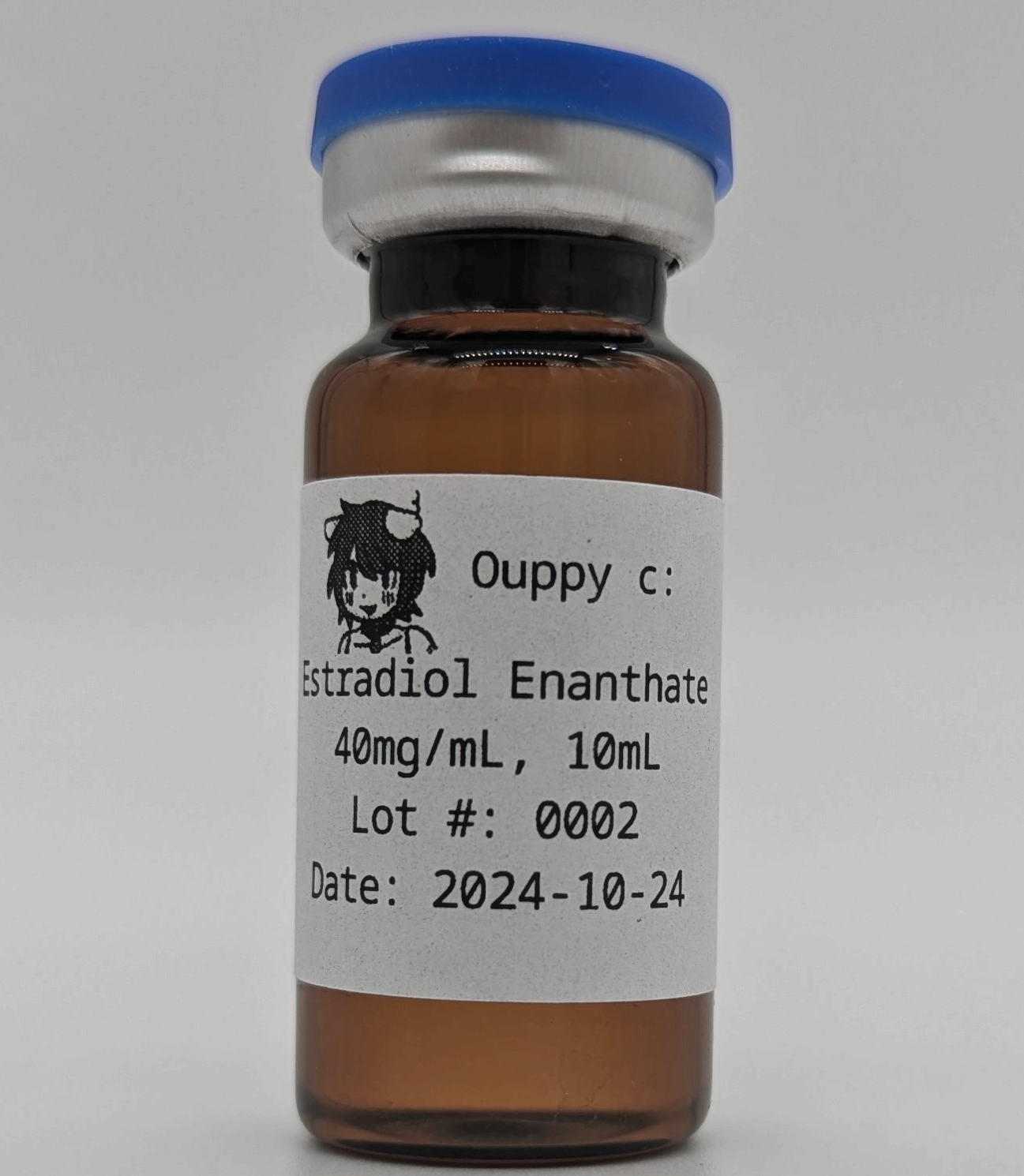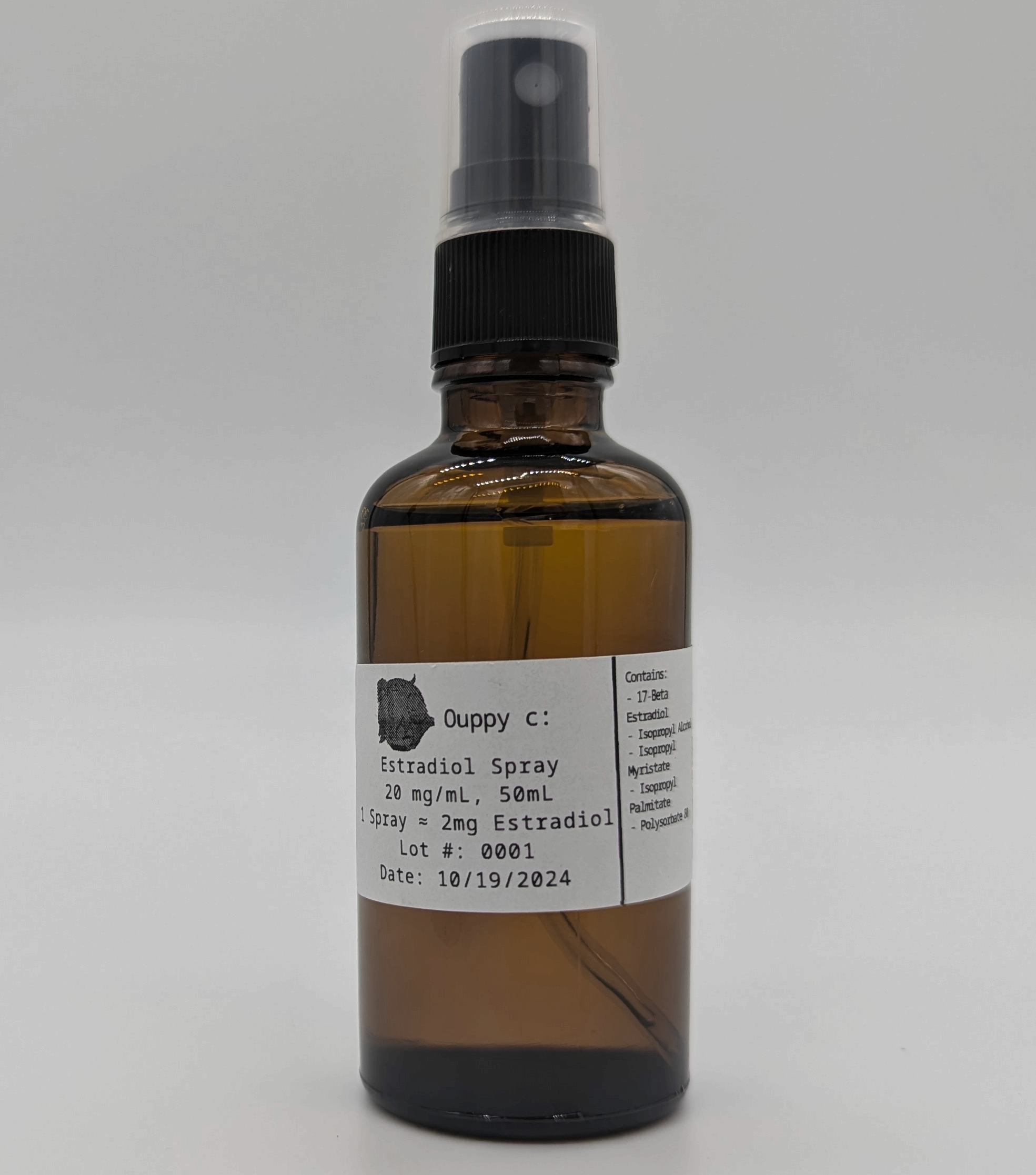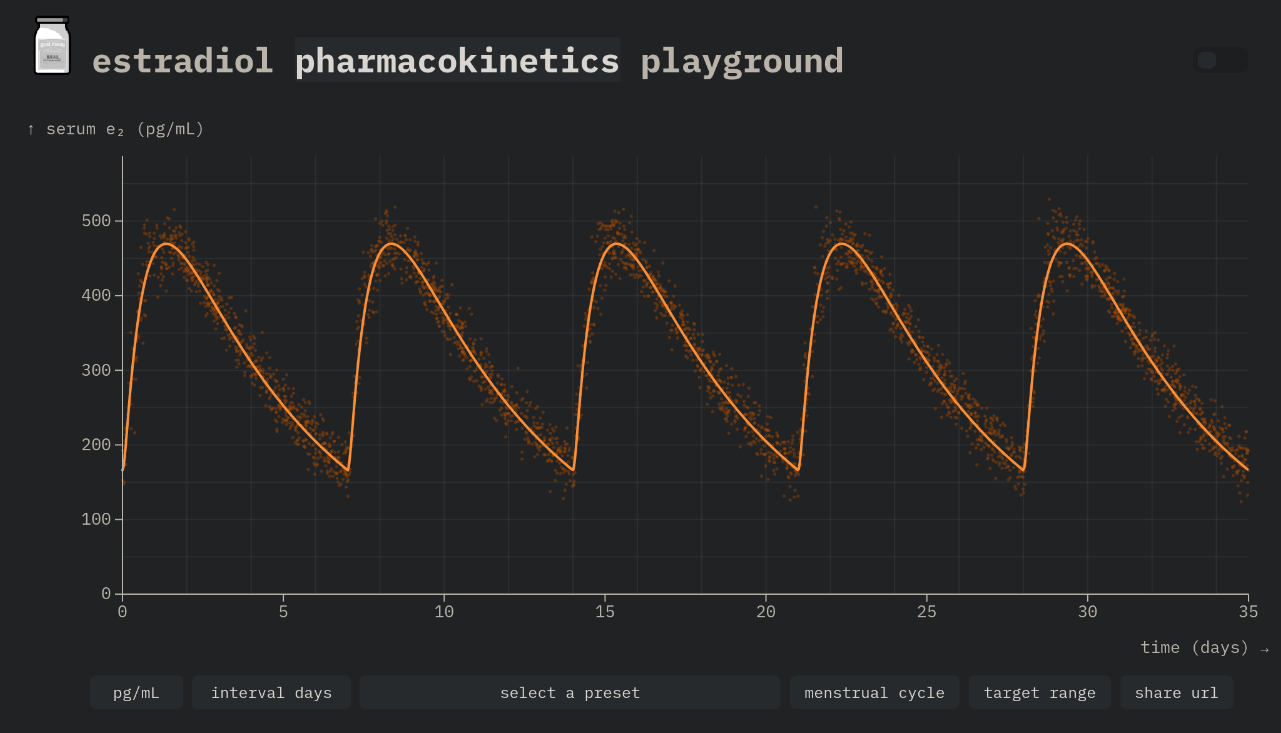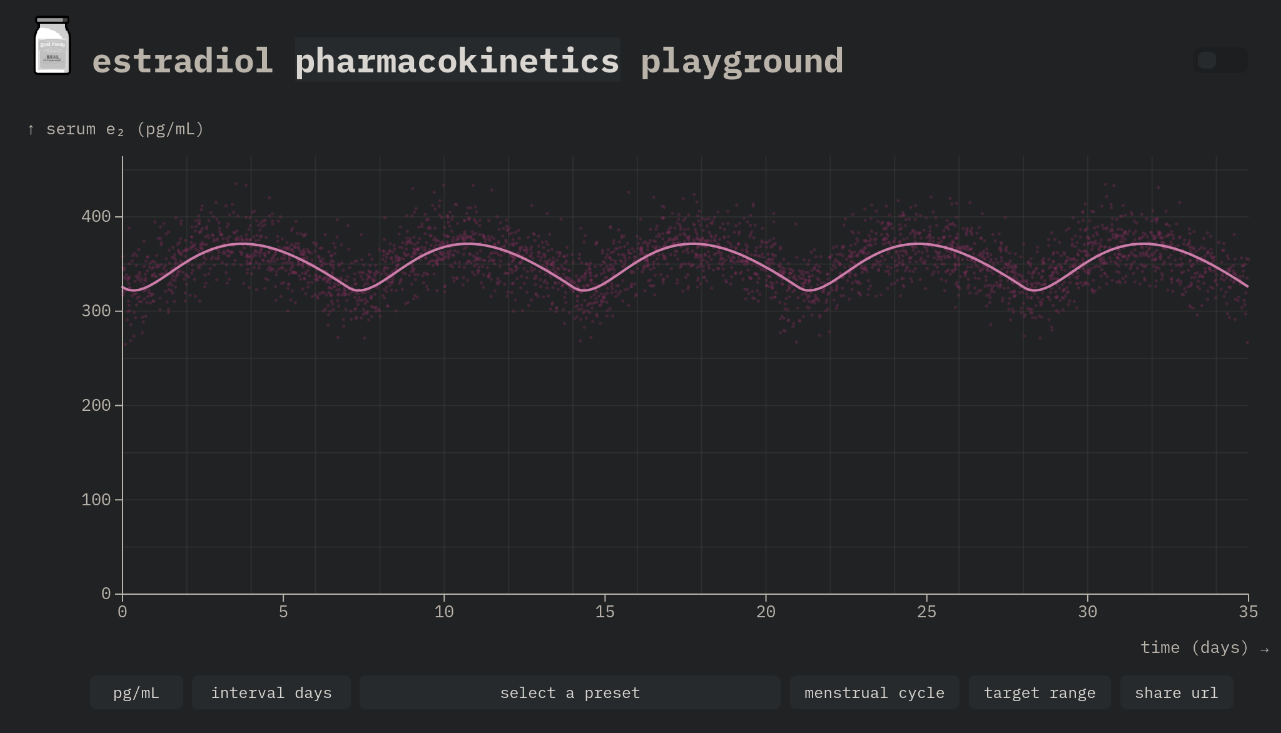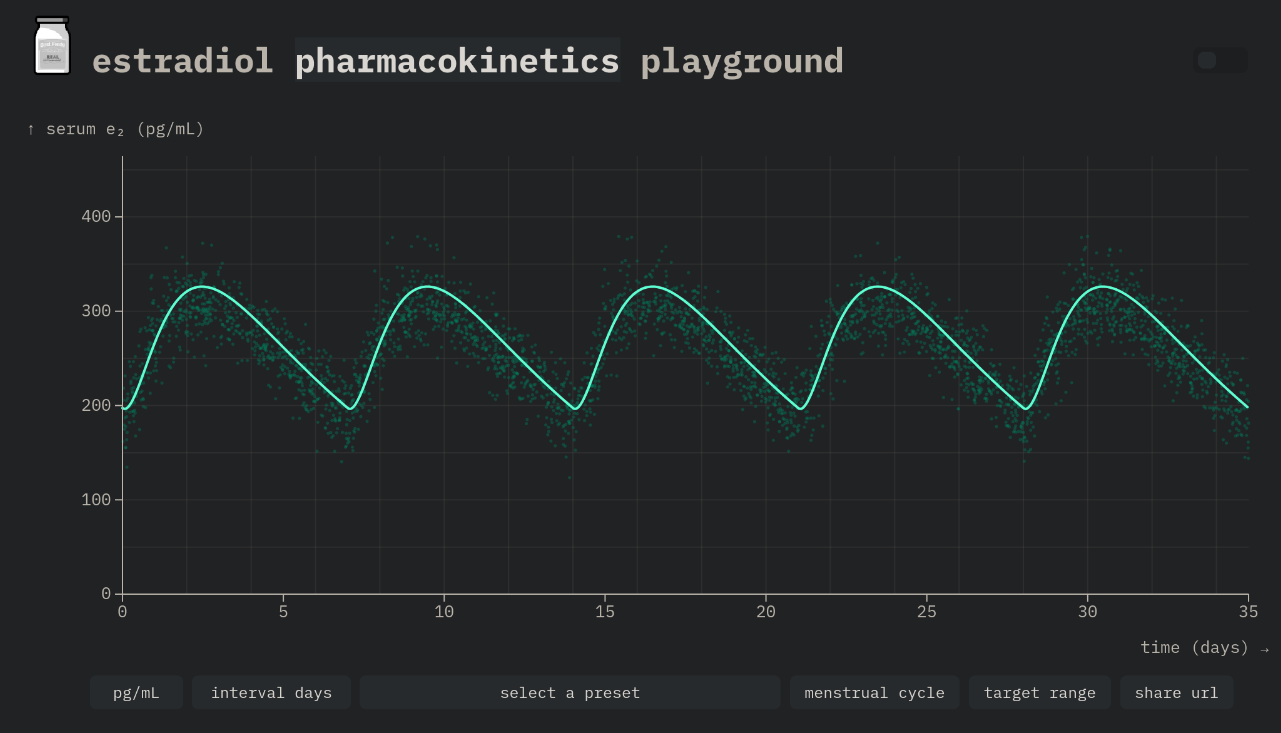Click a product below to get help specific to it!!
WPATH recommends trans feminine individuals maintain endogenous physiological levels of sex hormones (WPATH Standards of Care V8, p. 257, Table 5). This means that they are advising doctors to reach levels which are typical (physiological) in cisgender women (whose bodies produce estrogen, therefore it is endogenous). Resultantly, this means that they advise estradiol levels in the range of 100pg/mL to 200pg/mL, and testosterone levels Less than 50ng/dL. However, the consequence of trying to achieve endogenous hormone levels means that the amounts of estradiol you take are unlikely to adequately suppress testosterone on their own. This is typically mitigated in clinical scenarios by prescribing anti-androgens which inhibit the body's ability to absorb testosterone. These medications include Spironolactone, Cyproterone Acetate (Outside of the United States), and Bicalutamide.
However, there is competing advice from University of California, San Francisco which states "one approach [of titration] is to continue increasing estrogen until it reaches the upper limit of the female physiologic range" (Page 31, "Overview of titration and monitoring"). UCSF does not define those values in that document, however, reference to Mt. Sinai outlines premenopausal estradiol ranges between 30 and 400pg/mL.
Blood tests are available for those without insurance, and in Ouppy's experience, they're actually cheaper that way than with.
You can get hormone tests via a site called Private MD Labs.
They will send you to a Quest diagnostics location near you.
The "Hormone Light Test" is sufficient to get your readings of E and T, and it's about $90, but privatemdlabs VERY frequently gives out promotional credits, and so Ouppy finds it to regularly be closer to $65.
In a medical setting, doctors will typically administer blood tests 6 weeks after any change in dosages, and then every 3-6 months subsequently.
Dislcaimer: Ouppy is not a scientist and information here may be misleading or inaccurate.
If you are one of these smart types, please let it know so it can correct it's information.
17-Beta Estradiol, or simply Estradiol, is a sex hormone which is synthesized inside of the body. Anything which is labelled simply "Estradiol" is using this bio-identical form of estrogen. However, there are many esters of Estradiol. Esters are chemical compounds formed when part of the molecule is replaced with an acid. In the context of HRT, the functional difference is that esters are converted to 17-Beta Estradiol by our bodies, and the structure of them affects the time that takes. There are a handful of common esters. To Ouppy's knowledge, the only ones which are prescribed by physicians currently are Estradiol Valerate and Estradiol Cypionate. In the DIY community, there are some others which you may have seen, Estradiol Enanthate and Estradiol Undecylate. The primary useful difference in these is the time it takes to be fully consumed by the body:
Note that the line in these example graphs is a line of best fit, and varies from person-to-person.
Click on a graph to read more about that on the simulator's web-page.
General Help
What should my blood levels look like?
The Short
- Estradiol levels between 50pg/mL and 400pg/mL are generally safe.
- Adequately suppressed Testosterone should be less than 50ng/dL.
- Having a higher level does not necessarily mean your transition will be faster, or you will see more results.
The Details
Acceptable levels are a point of some dispute, and Ouppy would categorize them as falling into two major camps:WPATH recommends trans feminine individuals maintain endogenous physiological levels of sex hormones (WPATH Standards of Care V8, p. 257, Table 5). This means that they are advising doctors to reach levels which are typical (physiological) in cisgender women (whose bodies produce estrogen, therefore it is endogenous). Resultantly, this means that they advise estradiol levels in the range of 100pg/mL to 200pg/mL, and testosterone levels Less than 50ng/dL. However, the consequence of trying to achieve endogenous hormone levels means that the amounts of estradiol you take are unlikely to adequately suppress testosterone on their own. This is typically mitigated in clinical scenarios by prescribing anti-androgens which inhibit the body's ability to absorb testosterone. These medications include Spironolactone, Cyproterone Acetate (Outside of the United States), and Bicalutamide.
However, there is competing advice from University of California, San Francisco which states "one approach [of titration] is to continue increasing estrogen until it reaches the upper limit of the female physiologic range" (Page 31, "Overview of titration and monitoring"). UCSF does not define those values in that document, however, reference to Mt. Sinai outlines premenopausal estradiol ranges between 30 and 400pg/mL.
The DIY approach
Estradiol can dose-dependently suppress testosterone levels on it's own, however, the levels outlined by the WPATH guidelines, and physiological levels, are often insufficient. As a result, DIY-ers will often suggest much larger doses of estradiol than those recommended by physicians. In the DIY community, this monotherapy approach is often taken, meaning the administration of estradiol without the help of an anti-androgen. This is because, well, it's easier to only source one medicine DIY than two, but also because all of the anti-androgens on the market pose side effects that those in the DIY community commonly see as not being "worth it" in comparison to having supraphysiological estradiol levels.How expensive are blood tests? Can I get them without insurance?
Blood tests are available for those without insurance, and in Ouppy's experience, they're actually cheaper that way than with.
You can get hormone tests via a site called Private MD Labs.
They will send you to a Quest diagnostics location near you.
The "Hormone Light Test" is sufficient to get your readings of E and T, and it's about $90, but privatemdlabs VERY frequently gives out promotional credits, and so Ouppy finds it to regularly be closer to $65.
In a medical setting, doctors will typically administer blood tests 6 weeks after any change in dosages, and then every 3-6 months subsequently.
What are all these different kinds of estrogen?
Dislcaimer: Ouppy is not a scientist and information here may be misleading or inaccurate.
If you are one of these smart types, please let it know so it can correct it's information.
17-Beta Estradiol, or simply Estradiol, is a sex hormone which is synthesized inside of the body. Anything which is labelled simply "Estradiol" is using this bio-identical form of estrogen. However, there are many esters of Estradiol. Esters are chemical compounds formed when part of the molecule is replaced with an acid. In the context of HRT, the functional difference is that esters are converted to 17-Beta Estradiol by our bodies, and the structure of them affects the time that takes. There are a handful of common esters. To Ouppy's knowledge, the only ones which are prescribed by physicians currently are Estradiol Valerate and Estradiol Cypionate. In the DIY community, there are some others which you may have seen, Estradiol Enanthate and Estradiol Undecylate. The primary useful difference in these is the time it takes to be fully consumed by the body:
| Ester | Elimination Half-Life (Oral) | Elimination Half-Life (IM Injection) | Example graph (Click to see more detail) |
|---|---|---|---|
| 17-Beta Estradiol (Unesterified) | 13-20 Hours | Not Commonly Available | |
| Estradiol Valerate | 12-20 Hours | Average 3.5 days | |
| Estradiol Enanthate | Not Commonly Available | 5.6-7.5 days | |
| Estradiol Cypionate | Not Commonly Available | 11-14 days | |
| Estradiol Undecylate | Not Commonly Available | 1-2 months (10-12.5mg), 2-4 months (25-50mg) |
